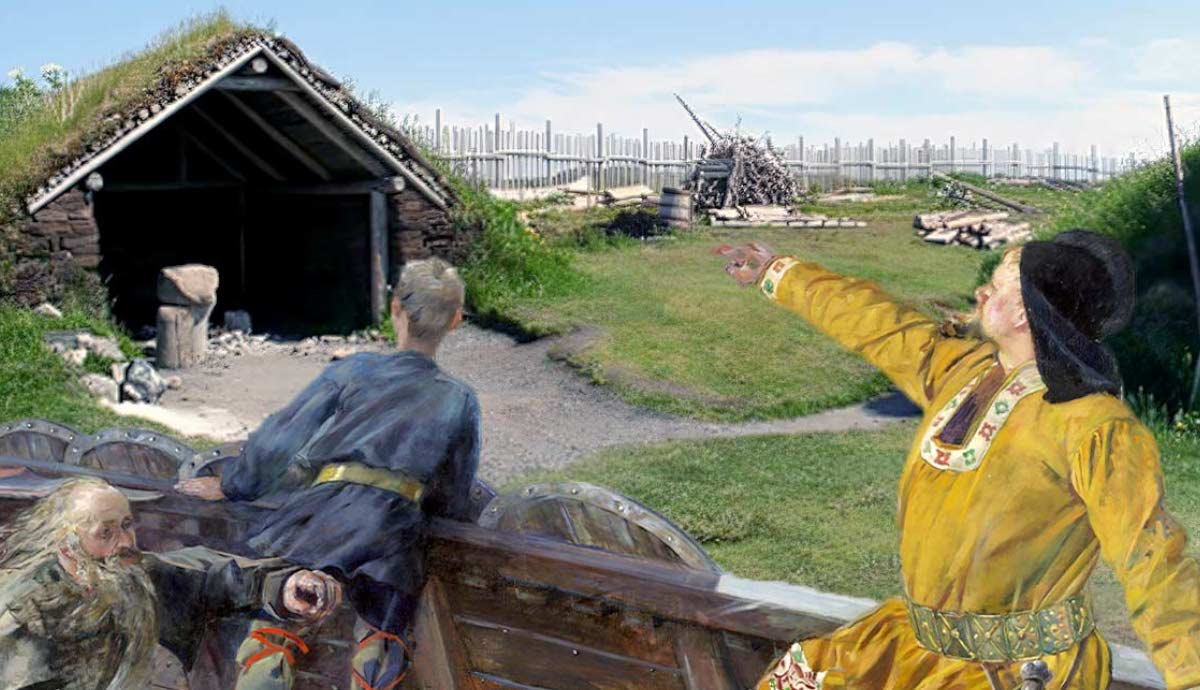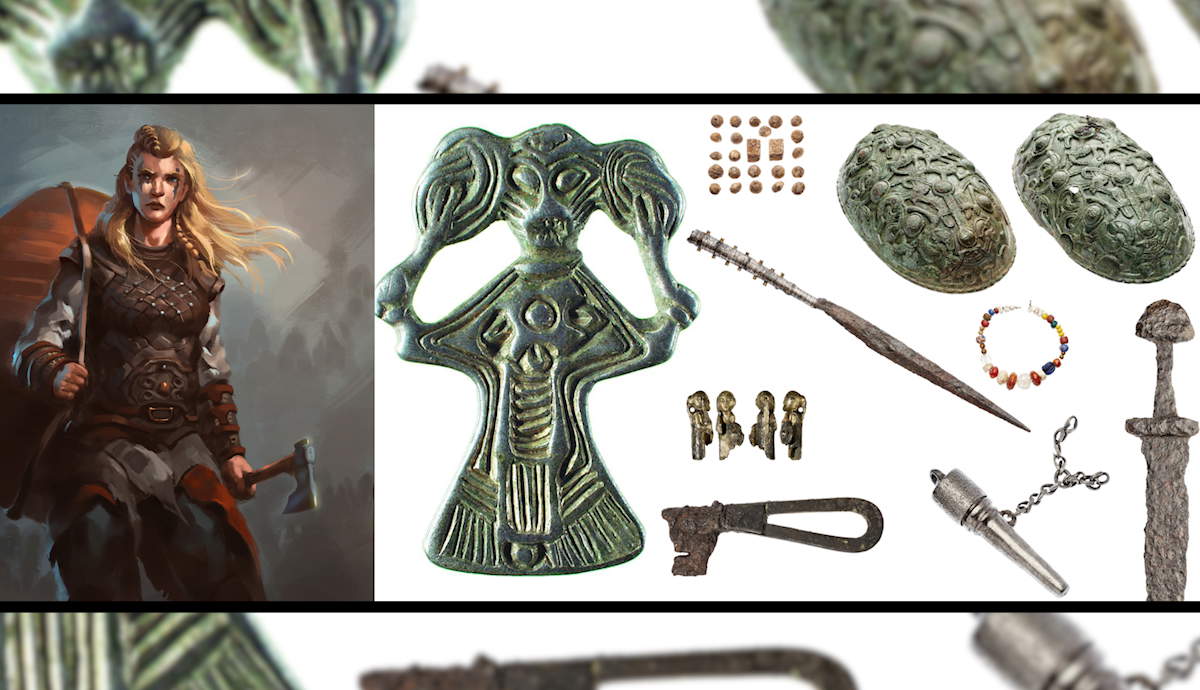
For years, people passed on their legends orally before eventually writing them down. The Greenlanders’ Saga and The Saga of Erik the Red immortalized the tales of the Vikings’ westward voyages featuring Leif Erikson. Leif, born around 970 CE in Iceland to Erik the Red and Thorhild, led the expeditions. According to the sagas, Erik the Red discovered Greenland, setting the stage for Leif’s own explorations. He assembled a team of thirty men and embarked on the journey. Discovering an environmental paradise with lush meadows, forests, a serene lake, and abundant salmon, Erikson and his crew chose to settle there. They established camp and made it their home. Centuries before Christopher Columbus, the Vikings had reached a New World, if the sagas were accurate. Finally, evidence confirming their arrival was discovered at L’Anse aux Meadows, Canada.
Before L’Anse aux Meadows

Precisely where Leif came ashore remained a mystery for centuries. The sagas contained few clues. In one anecdote, a member of Leif’s crew, Tyrkir the German, found grapes in a forest near their settlement. Leif christened the place Vinland—Land of Wine. Even a land of wine could not hold the Vikings forever. So, Leif and his men returned home with wood, grapes, and a tale of a land unlike any his people had heard of before. Word of Vinland inspired other Viking voyages and the Norse chroniclers wrote of these successful voyages. Centuries later, debate raged as to whether the tales of the Vikings in Vinland were fact or fiction with many explorers determined to prove the former.

An explorer and an archaeologist walked off a government medical boat into Canada in 1960. L’Anse aux Meadows was a small village of less than a hundred permanent inhabitants. It sits at the northern tip of Newfoundland. The Norwegian archaeologist Anne Stine Ingstad and her husband the Norwegian explorer Helge Ingstad were certain that either in the little village or somewhere nearby, they would discover evidence of the Vikings’ presence in North America. They had no reason to believe this. The conventional wisdom of 1960 was “in 1492 Columbus sailed the ocean blue.” But the Norse Sagas hinted at an alternative history in which Leif Erikson led the Vikings to North America. Anne and Helge were determined to prove it.

Helge was a lawyer by education but he had long abandoned that career. He had explored the Arctic first as a fur hunter in Canada. He became a successful travel/adventure writer, then Governor of Northeast Greenland. He had been interested in the evidence of Vikings in Greenland, but that interest grew when he married Anne Stine in 1941. They had a child but settling into domestic life never really fit the Ingstads. Had they been interested; Anne and Helge could have found evidence of much antiquity in L’Anse aux Meadows. For thousands of years, Indigenous peoples hunted, fished, and lived in the region. Scholars found evidence of Indigenous occupation of Newfoundland dating from approximately 5000 BCE to 850 CE and 1200-1500 CE. But the Ingstads were looking for other people. Anne and Helge traveled through the small villages of Newfoundland, asking pointed questions as they went. Had anyone seen any odd house foundations? Had anyone seen any unusual structures? Their queries led them to Epaves Bay. They reached a terrace near the shore. It was overgrown; nevertheless, rectangular mounds could be seen through the overgrowth. Looking down, they saw a peat bog and a small brook below the terrace. If Anne were a Viking, the terrace above the bay was exactly where she would have built a home and hearth. The Ingstads dug in.
The Excavation

Anne Ingstad took over. She had been waiting her whole life for an opportunity like the one she found at L’Anse aux Meadows. Anne began studying archaeology at the University of Oslo in the 1950s. She earned a Master’s degree in 1960. She began working at the Forest Museum in Norway, but during the 1950s, society still questioned a woman’s right to be a wife, mother, and professional. Anne faced judgment from her family for her choice to work as an archaeologist outside of the home. This pressure led her to attempt suicide twice. Fortunately, she survived.

As she began the excavations of L’Anse aux Meadows, there was no guarantee that she was about to find evidence of the Vikings. She thought there were four groups that could have built the structures she expected under the mounds: Native Alaskans, Indigenous Americans, fifteenth-century whalers, or the Norse. She had high hopes for the latter but let the soil and artifacts reveal L’Anse aux Meadows’ past. In the first season, she began by having workmen clear the turf and level the overgrowth. When that was done, she and Helge noticed two banks running parallel to one another, possibly connecting to something else. They grabbed their tools and pulled back the turf. Black sand emerged. They found brown sand, then grey sand too. But nothing else. No stones, no artifacts, no indication of who had been at L’Anse aux Meadows. Anne could not figure out what was going on.
They moved on to a second feature that sat parallel to the disappointing structure. They again removed the turf and found layers of black soil. The soil thickened and Anne began to see bits of charcoal in the earth. And then…they found stones. The stones were remnants of a hearth. Anne recognized it almost immediately. It looked just like a Viking Age hearth from Brattahlid in Greenland. Anne was ecstatic! A cooking pit emerged from the earth nearby. In it was a piece of iron slag. Neither Indigenous Americans nor Native Alaskans worked with iron and Anne’s confidence grew. She and Helge had found the first evidence of Vikings in North America. From 1961-1968, she conducted seven archaeological excavations at L’Anse aux Meadows confirming their history-making discovery.
The Architecture

Excavations of L’Anse aux Meadows revealed eight timber-framed turf structures: Three dwellings, four workshops, and a forge. To Anne and Helge, they must have looked familiar. In Greenland and Iceland, the Vikings left behind similar structures. The dwellings had a large hall that could have accommodated dozens of Viking seamen. Attached to each hall was a small hut. The structures Anne and her team excavated proved to be the earliest known European structures in North America. The forge represented the first known ironworking site in North America. The structures demonstrated that the Norse had made it to North America and established dwellings. These dwellings suggested the explorers had settled at L’Anse aux Meadows for some time. They also marked the first evidence of new cultural contact and technological innovation in North America.
The Artifacts

Since Anne and Helge started digging, around 800 artifacts have emerged from L’Anse aux Meadows including iron nails, a soapstone spindle whorl, and a bronze ringed pin. The ringed pin was telling. The Vikings adopted ringed pins from Ireland. They used them to fasten clothing. Archaeologists have found these pins across the Viking world. The Indigenous peoples of L’Anse aux Meadows did not use ring pins historically. The ringed pin became a key piece of evidence, confirming the presence of the Norse in North America. Other diagnostic artifacts, (objects that characterize specific times or groups of people), included a spindle whorl, a bone needle, and a glass bead. Excavations in the 1970s recovered wood fragments consistent with repairing ships as well.
Since the discovery of Viking Age L’Anse aux Meadows, advancements in technology have allowed archaeologists to learn more about the site. Chemical analysis of two jasper fire starters found at L’Anse aux Meadows showed that the artifacts came from the Notre Dame Bay region, raising questions about the connections of the Vikings in Newfoundland. Three pieces of wood offered further insight into the history of L’Anse aux Meadows. The wood was made of fir and juniper. The wood fragments had been cut with an iron blade and tossed into a pile of trash. Archaeologists found them centuries later. Studying the tree rings, scholars determined that the wood had been felled around approximately 1021 CE.
L’Anse aux Meadows: The End

All great adventures must come to an end. Following excavations at L’Anse aux Meadows, Anne published a two-volume report on the excavations. She earned her doctorate in archaeology in 1978, despite suffering a stroke the year before. Dr. Anne Ingstad continued investigating Viking Age artifacts from Norway. She died from cancer in 1997. Helge was given an honorary doctorate for his work in 1969. He passed away in 2001. Archaeologists continue to explore L’Anse aux Meadows with new eyes and technology.










